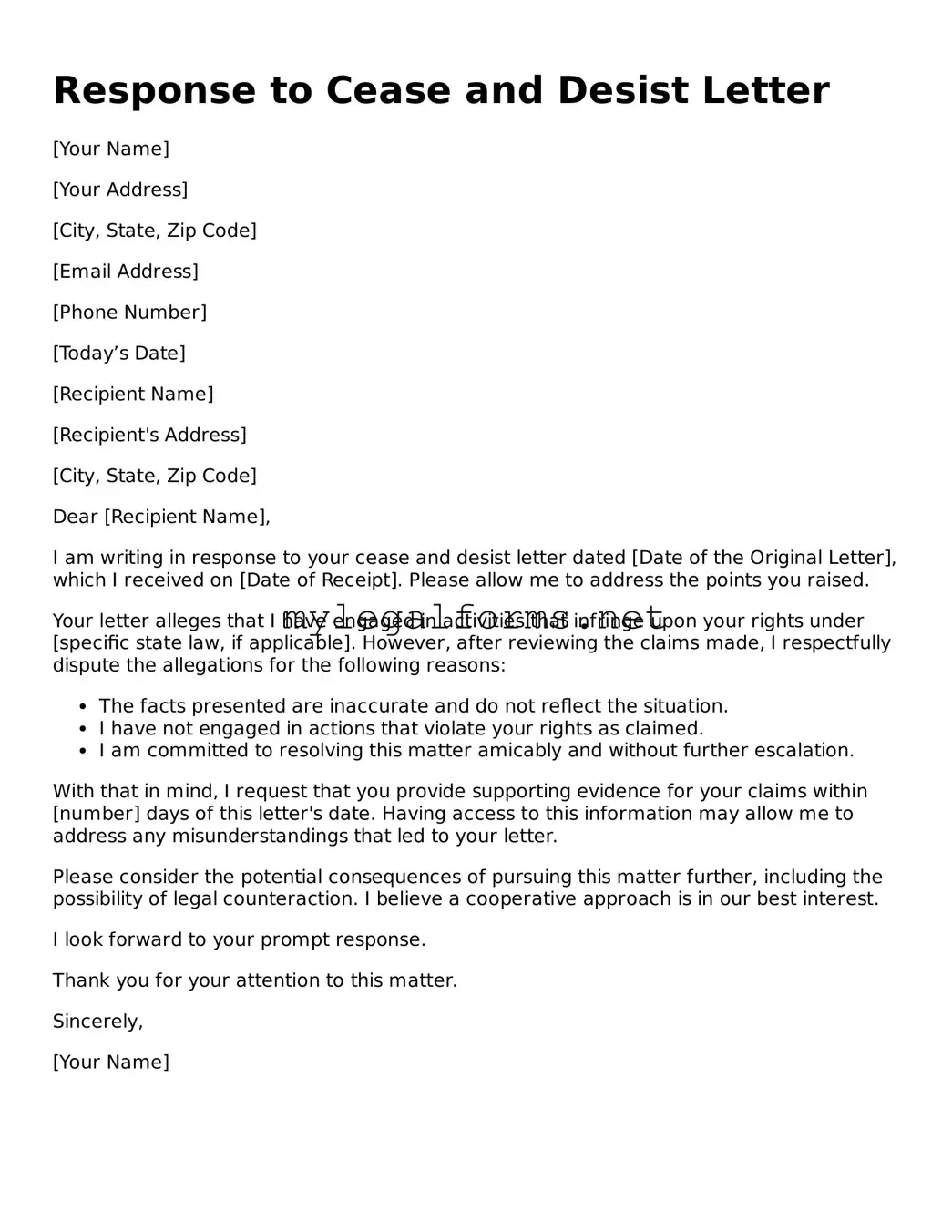Responding to a cease and desist letter can be a daunting task, and many individuals make critical mistakes during this process. Understanding these common pitfalls is essential to ensuring an effective response. One frequent error is failing to read the letter thoroughly. Many people rush through the document, missing important details about the claims being made. This oversight can lead to misunderstandings and inadequate responses.
Another mistake is not taking the letter seriously. Some individuals may dismiss the contents as mere threats, not realizing the potential legal consequences. Ignoring a cease and desist letter can escalate the situation, resulting in legal action that could have been avoided with a proper response.
Many people also fail to respond in a timely manner. A prompt reply demonstrates respect for the issue at hand and can help in negotiating a resolution. Delaying a response can be interpreted as an admission of guilt or an unwillingness to cooperate.
In addition, individuals often overlook the importance of maintaining a professional tone in their response. Emotional reactions can lead to confrontational language, which may worsen the situation. A calm and measured approach is crucial for effective communication.
Another common error is providing unnecessary personal information. Respondents sometimes include irrelevant details that do not pertain to the matter at hand. This can dilute the effectiveness of the response and create confusion.
Some individuals also fail to seek legal advice before responding. While it is possible to handle a cease and desist letter independently, consulting with a legal professional can provide valuable insights and guidance. This support can help clarify the situation and ensure that the response is appropriate.
Moreover, misunderstanding the specific allegations can lead to an ineffective response. It is vital to address each claim made in the letter directly. Failing to do so may leave the respondent vulnerable to further action.
Another mistake is neglecting to keep a copy of the response. Documenting the communication is essential for future reference. Without a record, it may be challenging to prove that a response was made.
Some individuals may also overlook the option to negotiate terms. Instead of outright denying the claims, exploring a compromise can often lead to a more favorable outcome for both parties. Engaging in constructive dialogue is often beneficial.
Finally, many people forget to follow up after sending their response. Following up can demonstrate commitment to resolving the issue and may help in reaching an amicable solution. Maintaining communication is key to preventing misunderstandings and fostering a positive resolution.
